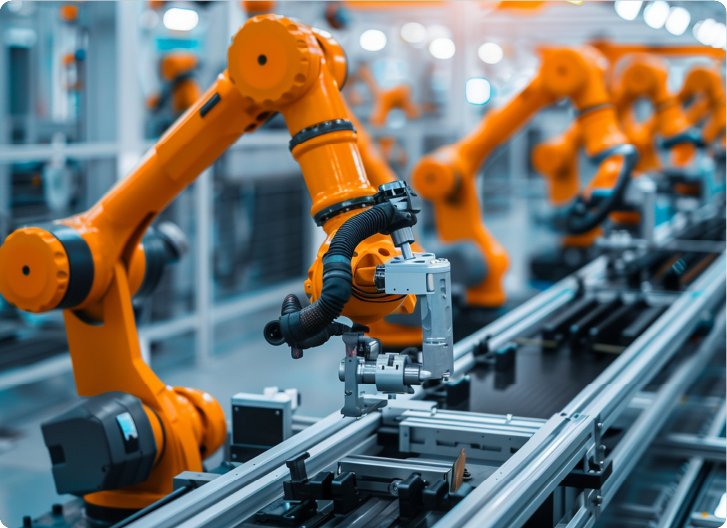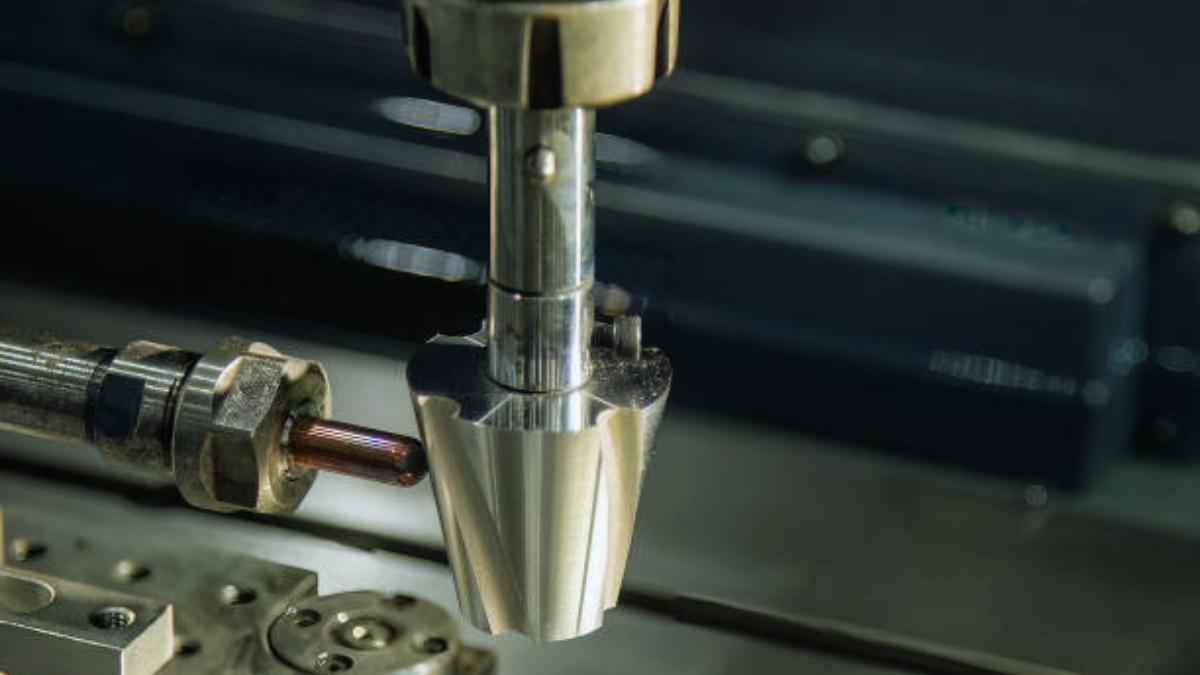
Sinker EDM doesn't use traditional mechanical means like cutting tools, blades, or drills. Instead, it utilizes controlled electrical sparks as the main operational means. The electrical sparks connect the tool to the workpiece without touching them during their short flight between objects. The sparks never come in contact with each other while remaining near the tools. The metal-melting process takes place whenever sparks make a jump between two adjacent objects. Heat guides your material transformation, whereas force is unnecessary.
Sinker EDM process allows the machining of any metal, no matter what its hardness level is. It works only on conductive materials, though. Plastics are incompatible with EDM technology. Wire EDM processing effectively deals with hardened steel alongside exotic materials and alloys. It handles them like a pro. The process can help form various parts, including those found in medical applications and aerospace industries, and tools. Through its method, you achieve specific results that maintain high levels of detail and demonstrate reliability in each operation. Let’s explore the distinguishing aspects between Sinker EDM vs Wire EDM.
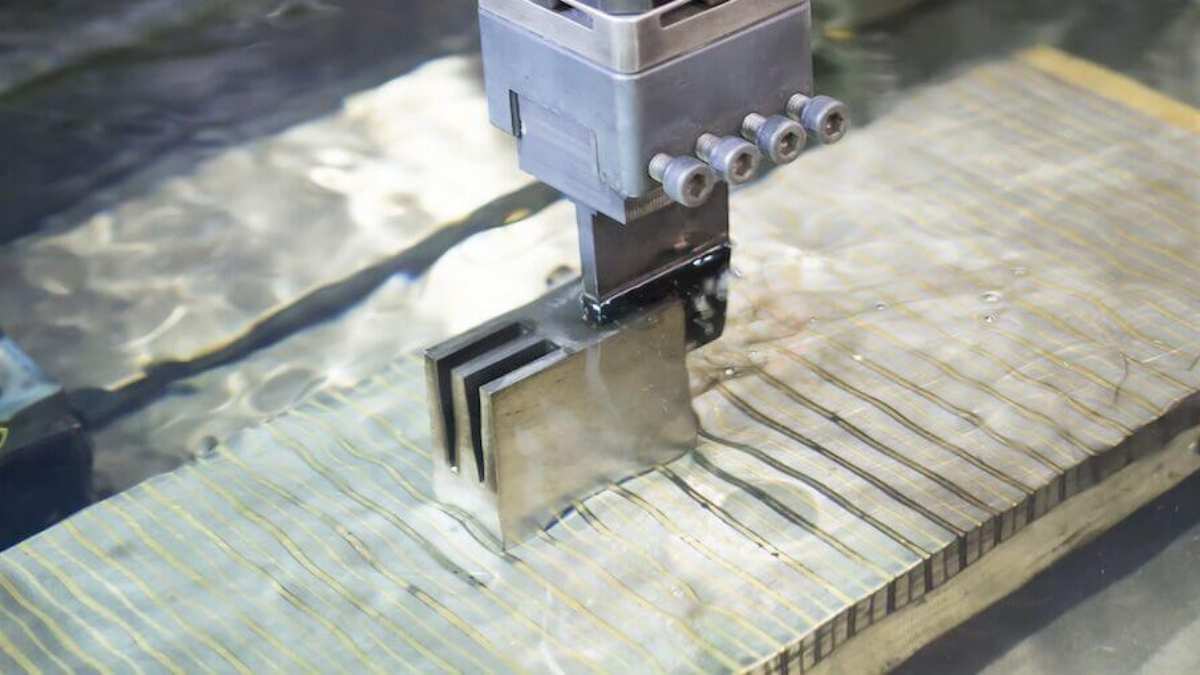
Before we go deeper into sinker EDM vs Wire EDM, let’s first discuss why EDM technology is dominant over conventional techniques. The selection of EDM involves recognizing its superior capabilities over both milling and turning operations. The alternative options include operating parts on a lathe instead of EDM or using milling techniques. Precision and suitable part shapes constitute the fundamental elements that explain the selection. EDM completes manufacturing jobs that other conventional techniques cannot manage. A machine operator does not require physical force to use EDM. The system requires guidance for energy to reach specific target areas.
Under EDM operations, you eliminate material through an energy-guided process. The process results in zero part stress. Thin and small cross sections remain accessible when using EDM technology. The process eliminates all chances of part bending as well as cracking or distortion. Every EDM process results in precise and exact results. The conventional approach often fails when trying to do complex cornered work. EDM handles them with ease.
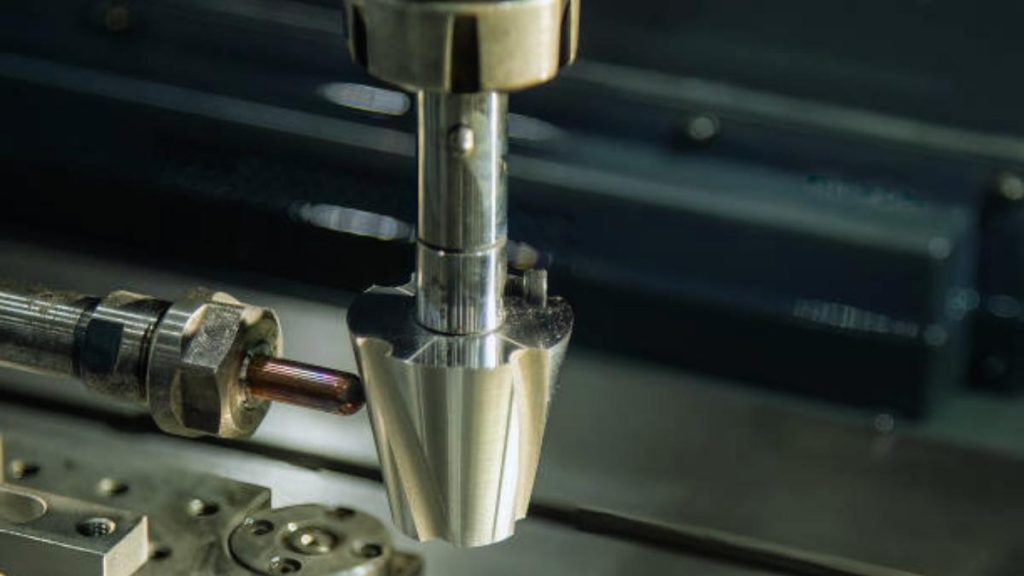
Sinker EDM feels like precision sculpting. Shaped electrodes enable your operation to perform the cutting process. During the operation, the tool descends beneath the surface of the metal material. The process receives its name of "sinker" EDM, because of the descending tool movement. No direct tool contact is required during this process. The entire cutting procedure depends on the active spark.
Graphite, and copper electrodes, serves as a standard tool material in your work. The electrodes follow the required shape pattern for cutting. The tool design requires creation only once. The tool creates that specific shape after its initial design and performs the same cutting task various times. The overall process executes within tanks that contain oil. It manage heat, and control debris accumulation.
The technology provides effective processing of mold and die components. The EDM process can cuts cavities as well as holes and precise details. Besides, it can perfectly cut complex three-dimensional objects. Any metal object proves to be an easy target for this process. Sinker EDM machines deliver predefined, exact edges through precise operations.
Sinker EDM performs its cutting operation through the use of shaped tools. You begin working with a complete electrode piece. Obtaining the shaped tool requires copper or graphite as the main material. The tool used in matching the final design appearance. You embed the tool component into its intended metal surface.
The cutting operation occurs without actual touching of the tools. Electric sparks bridge over an extremely narrow distance. These sparks erode the metal surface slowly. The total operation takes place inside an oil-containing tank. A cooling fluid, in line with a debris removal mechanism, operates within the system.
The tool can never be lowered directly. The machine sends electrical pulses of short duration. Spark emissions from the system cause the metal to decrease in size gradually. This process achieves excellent results through its slow working speed. The metal surface becomes smooth with defined edges through the method. Using this technique allows users to shape molds and dies along with cavities.
The tool consists of shaped electrodes. It is made of copper or graphite materials. Each material serves its own end for your finish results. The use of copper electrodes leads to better-defined and tougher details. The slower deterioration rate of graphite comes at the cost of increased mess.
The electrochemical form matches precisely with the shape of your part. The tool cannot serve two separate work assignments. The complexity of some parts may require several individual electrodes. Starting any precision cutting process requires perfect tools.
The tool electrode needs to be positioned above the workpiece area. Both elements of the setup exist within an area filled with dielectric liquid. The spark discharge benefits from the directing properties of this substance.
An immovable table supports your current workpiece. The device descends in small progressive motions. The electrode keeps away from making direct contact with the metal. The sparks consume the material outline.
All controls rest within a CNC unit. The operating interface manages both spark distance and feeding motions. You need detailed preparations when establishing any setup. The operational precision requires consistent perfect alignment in all operations.
Here are the common uses of the Sinker EDM process;
Sinker EDM provides excellent capabilities in mold production. Narrow features and exact corners are among the strengths of this technology. The process of mold making requires precise work functions, and the machine allows users to effortlessly create complex cavities.
Aerospace industries depend on sinker EDM because of its ability to deliver precise results. The technology works excellently for manufacturing small-dimensional parts. Sinker EDM represents a suitable process for medical products with complex designs.
Die manufacturers prefer sinker EDM because it enables them to shape hard materials. This technology generates tools and dies that standard machines cannot form. The machine effortlessly processes steel at any degree of hardness.
The EDM process using sinker capability delivers excellent results in complex geometrical applications. This process provides the most suitable method to shape hard materials. Sinker EDM operates as the prime solution for both complex designs and strong materials.
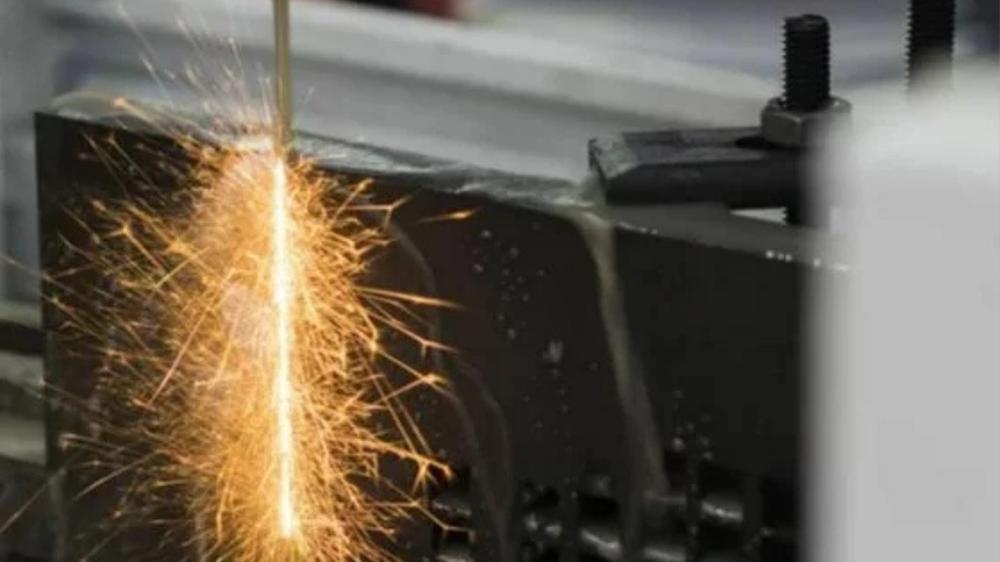
WireEDM is a precise cutting method. It uses a thin wire electrode to cut. The wire moves along a path to remove material. It’s great for intricate shapes and contours. Wire EDM can handle hard metals with ease. It’s perfect for making complex parts and molds.
WireEDM uses a thin, electrically charged wire as an active element for cutting operations. A pre-defined path guides the wire motion during the EDM process. The material is eroded through the process when the wire moves through it. The material disintegrates through a measuring process that produces the target design. Wire EDM produces precise cuts of complex shapes with ease. The workpiece remains untouched by the wire because only sparks come in contact with it. Cleaning method and accurate shape generation occur through this process.
WireEDM functions because of the essential wire component. The implements are commonly constructed from brass and copper coated or covered materials. The predetermined path of the wire engages electrical sparks to perform precise cuts.
The dielectric fluid serves to cool down the cutting area. The dielectric fluid performs two functions: it cools the cutting area and efficiently removes debris during the operation.
During cutting operations, the workpiece holder provides constant stability to the material. The holder provides a stable foundation that prevents material movement as the wire cuts through it.
A power supply unit determines the intensity of electrical discharges during operations. An accurate power delivery to the wire exists through the power supply system, which creates precise cutting results.
Through the control system, the machine receives programming instructions for precise pattern execution. It controls wire movement and sets power levels and cutting speed, which results in accurate outcomes.
The setup procedure requires users to position the workpiece, select appropriate wire, and modify machine parameters for correct execution. Proper setup facilitates continuous, precise wire cutting all throughout the work process.
Wire EDM technology provides solutions to industries which demand accurate and highly detailed parts. The following discussion describes Wire EDM's primary application areas.
Aerospace Engineering requires exact dimensions and resilient components for the produced parts. The tough metal properties of Wire EDM enable it to manufacture turbine blades alongside fuel nozzles and brackets. Wire EDM maintains precise dimensions that are crucial for maintaining safe operational components.
Wire EDM technology serves the automotive industry to produce complicated molds together with gears as well as transmission parts. The process succeeds in precise cutting of hard materials including tool steel and carbide.
Medical device manufacturing requires precision. It enables manufacturers to produce surgical instruments along with implants and various components that require precise tolerances and smooth surfaces.
Wire EDM operates as the best solution for developing molds and dies. The production of accurate sharp edges through this process is essential for the manufacturing process of both plastic injection molds and metal forming dies.
Wire EDM technology cuts small detailed components for electronics applications including circuit boards and connectors along with other sensitive electronic components. Its precision ensures high-performance electronics.
Prototyping and custom parts production find their best solution in Wire EDM technology. It helps manufacturers to quickly develop unique designs, which help them screen product concepts ahead of complete industrial realization.
| Feature | Sinker EDM | Wire EDM |
| Machining Method | Uses a stationary electrode to erode material. | Uses a continuously moving wire electrode. |
| Shape and Complexity | Ideal for complex cavities and 3D shapes. | Best for straight cuts and intricate shapes with thin profiles. |
| Accuracy and Surface Finish | High accuracy with excellent surface finish. | Extremely precise, often with a smooth surface finish. |
| Electrode Use and Wear | The electrode wears down as it erodes material. | The wire electrode gradually wears down during operation. |
| Speed and Efficiency | Slower due to electrode wear and material removal rate. | Faster for most cuts, especially for thin sections. |
| Cost and Setup Time | Higher initial cost and longer setup time. | Lower cost with faster setup time. |
Here are the case scenarios to employ sinker EDM:
Closed cavities or mold components manufacturing demands Sinker EDM technology. It demonstrates excellent capability to produce complex 3D geometric forms, especially when detailed mold and die components require machining. Using Sinker EDM produces accurate and perfectly shaped molds because this technology ensures high precision, which is essential for maintaining consistent product quality.
Sinker EDM proves its worth for deep-pocketed component manufacture as well as complex feature creation because of its efficient confined-space operation and detailed shape precision. It provides the capability to generate parts containing internal shapes that other manufacturing processes cannot produce.
The production process of Sinker EDM shows superior performance when manufacturing numerous identical detailed parts at high volumes. The initial setup process takes longer than Wire EDM does, yet once activated, the machine provides accurate results and continues work on various pieces without major changes. The automotive and aerospace sectors find Sinker EDM particularly useful because it provides reliable, high-quality production results.
Let’s discuss when you need wire EDM over sinker EDM.
As mentioned earlier, Wire EDM possesses exceptional capabilities for making delicate cuts of intricate patterns. It demonstrates superior performance when producing delicate edges and complicated details in your component. The machine produces highly specific cuts for all materials including sensitive or thin material types. The thin wire electrode provides outstanding capability for making small complex patterns which other methods would find difficult.
Wire EDM tools provide exceptional capability to cut entire material thickness while leaving the surrounding material unaltered. It efficiently produces precise and fast cuts of complex shapes, profiles, and slotted parts that make it suitable for manufacturing gears and structural components.
Wire EDM shows exceptional efficiency when machining parts that need these specifications of tight tolerances and minimal burrs. The cutting process produces absolutely clean edges and minimal burr formation, so post-machining becomes unnecessary. The technological advantages of Wire EDM make it the perfect solution for aerospace and medical fields that require high precision and cleanliness. Flexible fit requirements combined with precise details should be addressed through Wire EDM tooling.
Different precision projects benefit from the combination of Sinker EDM and Wire EDM to achieve optimal results. You will obtain better results with complex parts through an efficient combination of both techniques. Your manufacturing process starts with Wire EDM to generate complex profiles, which leads to the use of Sinker EDM for final shaping of internal cavities and hard-to-access features. The dual utilization of these EDM techniques allows you to use their advantages to reduce production time and build better parts.
When choosing between Sinker EDM vs Wire EDM, you must match the tool to your job. Think about your part’s shape and detail level. Need internal cavities or deep features? Sinker EDM is the better pick. Want sharp corners or slim profiles? Wire EDM will handle them well. Always consider your design before starting work.
Don’t just compare specs, also think about real-world use. Your material, geometry, and finish requirements should guide you. Both EDM types excel, but in different ways. Sometimes, using both is your best choice. EDM gives you control, precision, and reliability. Choose wisely, and your parts will show it.
